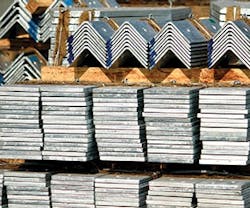How Green Is Your Supply Chain?
Your building may be certified green, but what about the materials that went into it or the supplies used to run it? A new study by the United Nations Environment Programme examines the supply chain in an attempt to understand its environmental impact.
Focusing on new and existing office buildings (both public and private) as a representative building type, the study evaluates potential green interventions in the design, delivery, and occupation of buildings, as well as the material supply chain that enables each of those stages.
Purchasing and procurement offer unique opportunities to meet green goals, according to the study authors; emphasizing sustainable purchasing practices “helps create value for the businesses involved by providing a clearer picture of purchasing-related impacts and potential risks.” Standard criteria for green private procurement policies are sorely needed, but in the meantime, FMs can look to responsible purchasing trailblazers for ideas.
The multinational building materials manufacturer Saint-Gobain, for example, developed a Suppliers Charter that explains its requirements for service providers in the areas of human rights, business practices, and economic and social performance. Compliance with the charter is monitored with a questionnaire and regular site audits. In addition, it relies on lifecycle assessments (LCAs) to measure the environmental footprint of its products, and the company’s Building Distribution sector now enforces an Environmental Timber policy that monitors the origin of wood products and ensures their traceability.
The study also introduces the Intensity Analysis Methodology, an LCA-based attempt to understand the impacts of 10 raw materials – aluminum, bricks, cement, flat glass, mineral wool, plaster board, polystyrene, polyurethane, rebar, structural steel, and timber. Lifecycle data indicates that structural steel, aluminum, and cement were the biggest contributors to the studied materials’ total environmental impact, an assessment that looked at primary energy consumption, fresh water use, disposed waste, and global warming potential. Rebar, brick, and polyurethane were characterized as making a “modest” contribution to the total impact compared to the other materials.
However, the study clarifies that “a high contribution is not necessarily equivalent to a high reduction potential,” so FMs looking to minimize their usage of high-impact materials should look for additional information on reduction potential and consider which resources are most endangered in their areas – for example, facilities in drought-stricken states should prioritize products with a low impact on usage of fresh water.
Interested in boosting the green credentials of your own materials purchases? Greening the Building Supply Chain is available free at unep.org.
